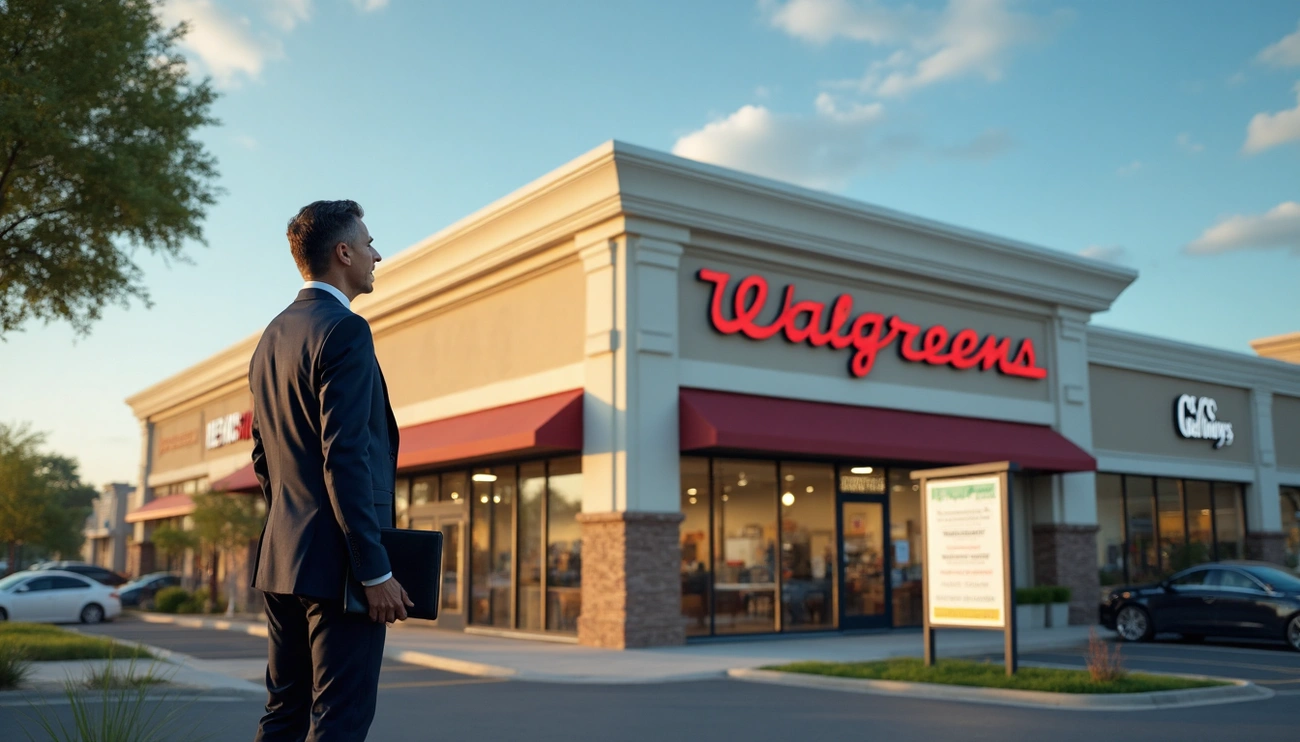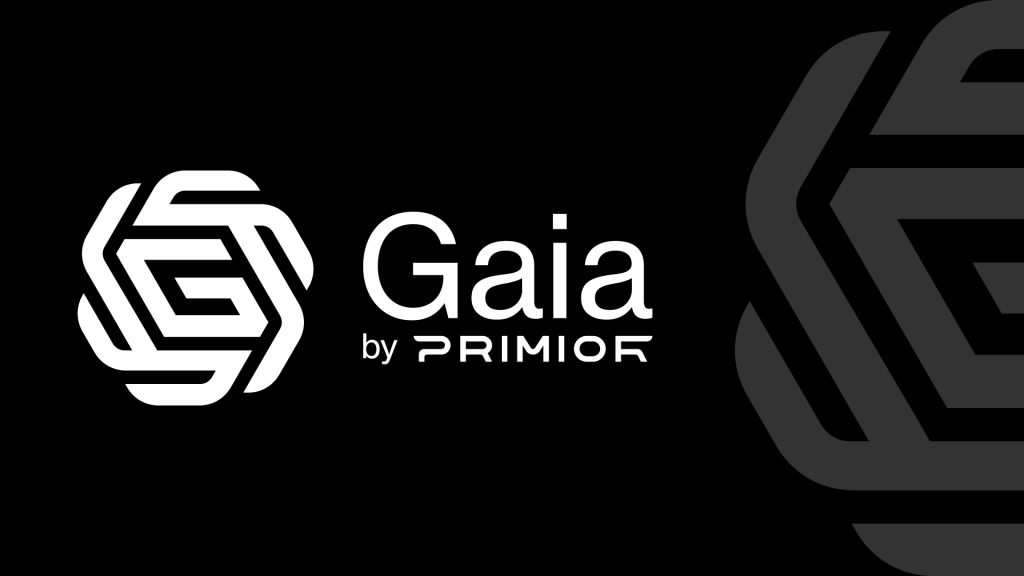Here’s something interesting – 65% of self-made millionaires build their wealth through at least three income streams. Absolute net lease investments are often one of their go-to strategies.
These investments stand out because they’re incredibly stable. Tenants typically sign on for more than 15 years, unlike standard commercial leases that only last 3-5 years. An absolute net lease puts all property costs on the tenant’s shoulders. They handle everything – insurance, taxes, and maintenance. Your only job? Collecting rent checks. This setup goes beyond regular triple net leases because tenants take on complete financial responsibility, making it a truly hands-off investment.
Absolute NNN leases are perfect for accredited investors who want passive income with minimal risk. The tax benefits make them even more attractive. You can claim depreciation deductions and use 1031 exchanges to put off capital gains taxes. Most investors see yearly returns between 8-12% ROI, which explains why savvy investors keep adding these assets to their portfolios.
This piece will help you review absolute net lease opportunities confidently, whether you’re just starting out or want to make your current strategy work better.
Understanding Absolute Net Lease Investments
Smart real estate investors know that lease structures can be the difference between hands-off income and constant property management. Absolute net leases are one of the best hands-off options you can find in the commercial real estate world.
What is an absolute net lease?
An absolute net lease gives landlords the most favorable terms in commercial real estate. The tenant takes care of all property-related expenses on top of their base rent. These costs include property taxes, insurance premiums, routine maintenance, and big structural repairs like fixing roofs, foundations, and HVAC systems.
You’ll see this complete lease setup with single-tenant commercial properties that national brands occupy. Many standalone retail spots like Starbucks, Walgreens, and Chick-fil-A use absolute net leases. These deals usually run for 15 years or longer, which gives investors stable, long-term income.
Absolute net lease vs triple net lease
Both lease types put a lot of responsibility on tenants, but there are key differences between absolute net leases and triple net (NNN) leases. Triple net tenants pay the “three nets”—property taxes, insurance, and maintenance costs. The landlord still handles major structural repairs.
The biggest difference shows up in who takes care of structural issues and capital expenses. Absolute net lease tenants handle everything—from roofs to foundations. Triple net landlords might pay costs upfront and get paid back by tenants, while absolute net tenants pay these expenses directly.
Triple net leases work better for properties with multiple tenants and shorter 5-year terms. Absolute net leases fit single-tenant properties with longer terms. This matters a lot to investors who want truly passive income.
Why passive investors prefer absolute NNN leases
Smart investors love absolute net leases because they’re truly hands-off. Real estate pros call it an “armchair investment” since landlords just collect rent checks without doing any management work.
The money side is predictable too. These leases come with set rent increases over time, so investors know what they’ll earn years ahead. The deals might start at 5% cap rates, but the actual returns (IRR) can hit 7-10% over the full lease term.
The quality of tenants adds another layer of security. Big, financially stable corporations choose absolute net leases because they want control over operations and steady real estate costs across locations. These reliable tenants rarely default and provide steady income.
Absolute net leases are perfect for investors who want minimal hassle and reliable returns that line up with their wealth-building plans focused on passive income.
Ready to explore how absolute net lease investments might fit into your portfolio? Schedule a strategy call with Primior today: https://primior.com/start/
Step 1: Define Your Investment Goals
A clear set of investment goals creates a roadmap for your passive income experience with absolute net lease investments. Your early precise objectives help you identify properties that line up with your financial needs and risk tolerance.
Clarify your income and risk expectations
Smart absolute net lease investors start with realistic return expectations. Many newcomers expect flashy double-digit yields, but these investments typically generate conservative yet stable returns. You can expect a 5-7% long-term return instead of the 10-12% that new investors seek. This modest figure comes with major advantages compared to other investment vehicles:
- Stable income stream with built-in annual rent increases to protect against inflation
- Corporate-backed lease guarantees that ensure consistent monthly payments whatever the location performance
- Tax advantages through cost segregation depreciation and 1031 exchanges that boost overall returns
The true value of absolute triple net lease opportunities lies in their dependability rather than spectacular growth. So, these investments balance the higher-risk nature of stock markets and create a reliable wealth strategy.
Determine your preferred level of involvement
Absolute NNN leases offer a truly hands-off approach. You need to decide how much you want to manage your real estate holdings. Absolute net leases free you from all traditional landlord duties. This means:
The tenant handles everything from routine upkeep to major structural repairs. They take care of taxes, landscaping, parking lots, roofing, and equipment costs. You avoid maintenance obligations, operational concerns, and management costs that usually eat up 3-5% of returns in other commercial properties.
This represents a major lifestyle upgrade for investors moving from management-intensive properties like apartment complexes or retail centers—especially during retirement or while focusing on other ventures.
Set your investment timeline
Absolute net lease agreements run for 10-25 years, making them ideal for long-term wealth building. Your investment goals should address:
The length of time you plan to hold the investment (many use these for retirement income) Your plans to pursue a 1031 exchange to defer capital gains taxes The property’s fit into your estate planning strategy
These investments need upfront evaluation to ensure they match your time horizon, even with their extended terms. The buying process takes 1-6 months, based on your specific circumstances and property availability.
Successful absolute net lease investing needs strategic foresight. A full analysis of potential tenants’ financial strength, understanding of all lease terms, and guidance from real estate professionals will help you guide complex agreements.
Ready to develop an absolute net lease investment strategy tailored to your specific goals? Schedule a consultation with Primior’s experts: https://primior.com/start/
Step 2: Evaluate the Property and Lease Terms
A review of lease documentation is the life-blood of successful absolute net lease investing. Even seasoned investors sometimes miss key lease terms that can affect investment performance by a lot over time.
Check lease duration and renewal clauses
Absolute net lease agreements usually run from 10 to 25 years. These provide exceptional income stability compared to standard commercial leases that last only 3-5 years. Such extended duration gives reliable passive income but needs a complete original review.
These renewal options need special attention:
- Notification deadlines: Most leases need tenants to notify landlords 6-12 months before expiration about renewal plans. Missing these deadlines can void renewal rights completely.
- Renewal term length: The best approach is to negotiate multiple renewal periods (such as two five-year options) to keep tenants longer.
- Renewal rate determination: A careful look at how renewal rates will be calculated is essential—fixed increases, market rates, or CPI adjustments all affect long-term returns.
It’s worth mentioning that poorly written renewal clauses can create major problems. Courts have ruled consistently that vague renewal terms may make agreements unenforceable. Your investment needs protection through renewal clauses with specific language about rental determination or clear ways to solve disagreements.
Assess tenant responsibilities and exclusions
The key feature of an absolute triple net lease is how it moves all financial obligations to the tenant. Standard triple net leases usually keep structural elements as landlord’s responsibility. However, absolute net leases give all but one of these expenses to tenants—including major capital costs like roof replacement, foundation repairs, and HVAC system overhauls.
So, check the lease agreement to confirm these clearly assigned responsibilities:
- Property taxes and insurance premiums
- Routine maintenance and repairs
- Utilities and landscaping
- Major structural components
- Capital improvements
Not all leases sold as “absolute net” have similar provisions. Some landlords add expense exclusions or caps that limit tenant obligations. The exclusion clauses need a good look as they might unexpectedly move costs back to you as the owner.
Review rent escalation terms
Rent escalation provisions help your investment keep pace with inflation throughout the lease term. These clauses show how and when rental rates go up over time.
Common escalation structures include:
- Fixed percentage increases: Simple annual increases (usually 2-3%) that give predictable income growth
- Consumer Price Index (CPI) adjustments: Rent increases linked to inflation metrics, offering inflation protection but less predictability
- Market-based adjustments: Regular adjustments to current market rates, giving potential upside but adding uncertainty
New absolute net lease investors often miss whether escalations compound or reset annually. Cumulative escalations build up year after year, while annual escalations start fresh each period. This difference affects long-term returns by a lot.
The best investment protection balances your needs with tenant sustainability. High escalations might boost short-term returns but could lead to tenant turnover or disputes. Low escalation terms leave your investment exposed to inflation erosion over the lease’s long duration.
Ready to get into absolute net lease opportunities with expert guidance? Schedule a strategy call with Primior today: https://primior.com/start/
Step 3: Analyze the Tenant and Location
Two main factors determine the strength of any absolute net lease investment: tenant quality and property location. These elements shape your investment’s long-term stability and value, even with perfect lease terms.
Assess tenant creditworthiness
Successful absolute triple net lease investments depend on tenant financial stability. These leases stretch across 15-25 years, making the tenant’s capacity to meet long-term obligations crucial. The most reliable income streams come from investment-grade tenants rated BBB- or better by Standard & Poor’s. Such corporations show proven financial strength with minimal risk of default.
Key factors to look at when checking potential tenants:
- Financial statements – Review audited reports, income statements, and balance sheets to verify profitability and financial health
- Credit rating – Better ratings mean greater stability and lower risk exposure
- Corporate guarantees – The lease should have guarantees from financially sound parent companies that provide extra security
Your property’s financing options depend on the tenant’s creditworthiness. Properties leased to high-credit tenants usually get better terms from lenders, including higher loan-to-value ratios and lower interest rates.
Get into the tenant’s business model
A tenant’s business model needs careful review beyond credit ratings. Corporate-backed absolute NNN tenants like Dollar General, McDonald’s, Walgreens, and 7-Eleven offer better stability. These businesses tend to perform steadily whatever the economic conditions.
Multi-unit operators with proven track records should back franchisee-operated locations. Single-location franchisees carry much higher risks than operators with multiple units who can handle temporary setbacks.
The tenant’s business should match current consumer trends. Essential businesses and discount retailers have shown remarkable strength during economic uncertainty.
Look at market trends and property location
Lenders rank location quality among their top three factors when financing commercial properties. The best absolute net lease locations usually have:
- Dense population areas with clear visibility
- Spots along major retail corridors with heavy traffic
- Easy access to consumer staples like pharmacies and grocery stores
Secondary locations near busy roads might still make profitable investments with proper analysis. Rural areas or small towns can also perform well when essential businesses serve communities with limited options.
Different properties need different location features. To name just one example, see how Walgreens picks 1-2 acre prime corner parcels, while medical facilities do well in less prominent spots with the right demographics.
Looking to invest in high-quality absolute net lease properties with premier tenants in strategic locations? Let’s talk strategy at Primior: https://primior.com/start/
Step 4: Review Financial Metrics and Exit Strategy
Financial metrics are the foundations of successful absolute net lease investment decisions. A thorough analysis of tenants and location matters, and understanding key financial metrics helps determine if a property matches your investment strategy.
Calculate cap rate and net operating income
The capitalization rate (cap rate) is the main valuation metric for absolute triple net lease properties. This percentage shows your expected annual return on investment when you purchase the property with cash. You can calculate it by dividing the net operating income (NOI) by the property’s current market value.
Cap Rate = Net Operating Income / Current Market Value
NOI calculation becomes straightforward for absolute net lease investments – it’s just the annual rent received because tenants handle all operating expenses. Most absolute NNN properties trade between 4-10% cap rate ranges. Higher rates often show potentially higher risk and returns.
Cap rates help investors compare different properties and assess their relative market value quickly. Property values typically rise when cap rates fall, while declining demand may lead to rising cap rates.
Understand cash-on-cash return and IRR
Cap rate measures unleveraged returns, while cash-on-cash return shows your actual cash yield with financing. This metric divides your pre-tax cash flow (rent minus debt service) by your original cash investment.
IRR provides a complete picture for long-term evaluation. It accounts for the timing and amount of all cash flows throughout your investment period. Absolute triple net leases can generate 7-10% IRR with modest 5-6% cap rates when you factor in rent escalations, tax benefits, and principal paydown.
Plan for resale or 1031 exchange
A clear exit strategy should exist from day one for every absolute net lease investment. You can either sell outright or execute a 1031 exchange.
The 1031 exchange offers the most tax-efficient exit approach. It lets you defer capital gains taxes by reinvesting proceeds into another “like-kind” property. This strategy requires you to identify replacement properties within 45 days of sale and complete the transaction within 180 days.
Your exit planning should include:
- Potential market conditions at sale time
- Remaining lease term (properties with 10+ years left typically command premium prices)
- Depreciation recapture tax implications
Ready to use these financial metrics in your absolute net lease investment strategy? Schedule a consultation with Primior’s experts: https://primior.com/start/
Conclusion
Conclusion
Absolute net lease investments are powerful tools to build wealth for passive investors who want stability and predictable income. This piece shows how these unique investment structures let tenants handle all property responsibilities. This creates hands-off opportunities you rarely see in real estate.
Your success with absolute net lease investing depends on careful evaluation of several factors. Clear investment goals are the foundation for choosing properties that match your income needs, involvement level, and timeline. A full picture of lease terms helps you avoid surprise expenses during the 10-25 year agreement period.
The quality of your tenants plays a crucial role in how well your investment performs. Investment-grade corporations with strong credit ratings bring the security and reliability that make absolute net leases attractive. Smart location choices protect your investment from market changes that could affect property value.
Financial metrics like cap rates, NOI, cash-on-cash returns, and IRR are great ways to compare opportunities and project future performance. These calculations and a solid exit strategy help you boost returns through sales or tax-advantaged 1031 exchanges.
Absolute net lease investments typically yield 5-7% returns instead of double-digit gains. Their stability and tax benefits make them valuable additions to any sophisticated investor’s portfolio. Corporate-backed lease guarantees, built-in rent increases, and minimal management needs create the perfect vehicle to build lasting wealth.
Ready to add absolute net lease investments to your wealth-building strategy? Schedule a customized consultation with Primior’s investment experts today: https://primior.com/start/















